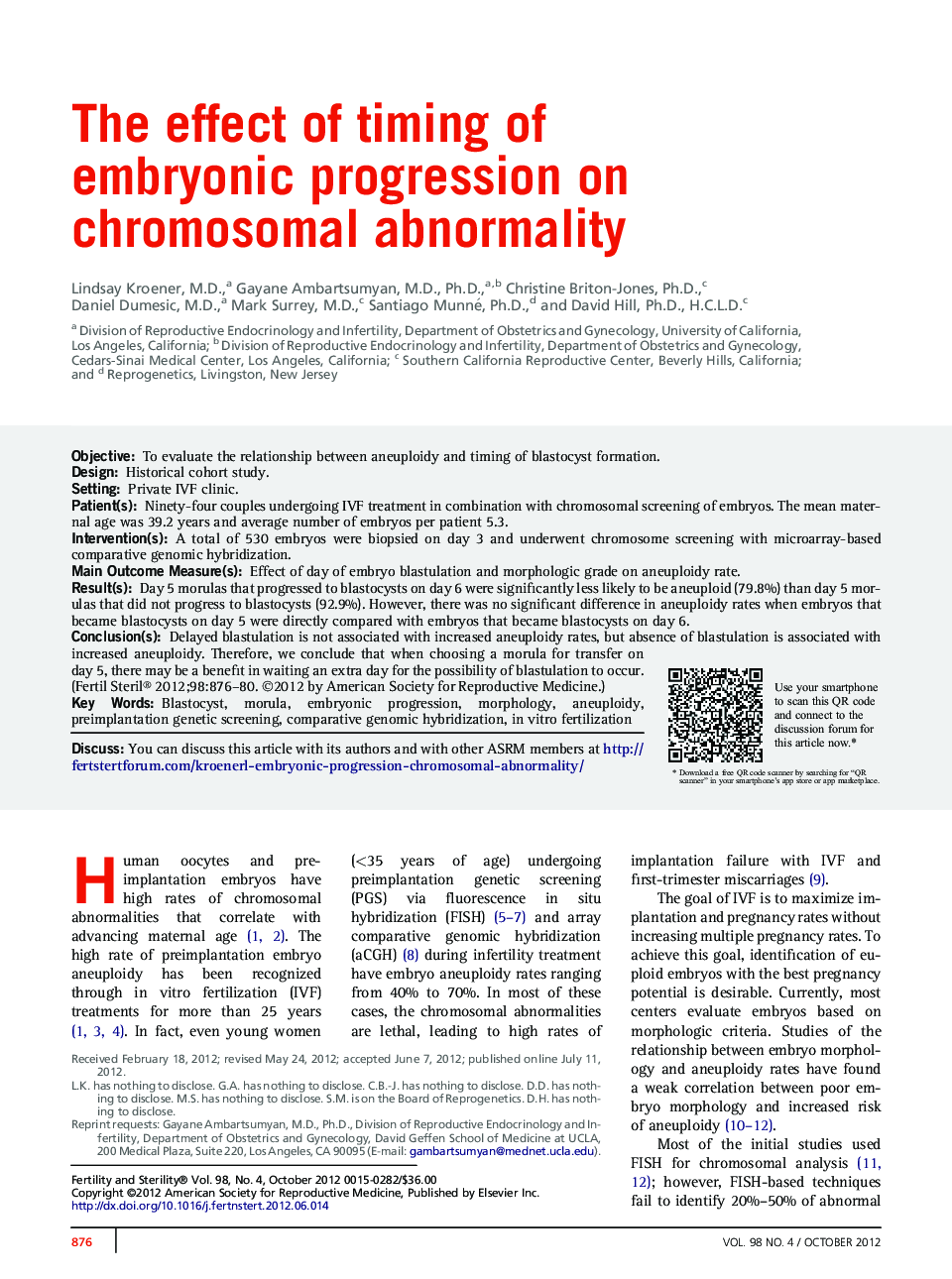| Article ID | Journal | Published Year | Pages | File Type |
|---|---|---|---|---|
| 3937125 | Fertility and Sterility | 2012 | 5 Pages |
ObjectiveTo evaluate the relationship between aneuploidy and timing of blastocyst formation.DesignHistorical cohort study.SettingPrivate IVF clinic.Patient(s)Ninety-four couples undergoing IVF treatment in combination with chromosomal screening of embryos. The mean maternal age was 39.2 years and average number of embryos per patient 5.3.Intervention(s)A total of 530 embryos were biopsied on day 3 and underwent chromosome screening with microarray-based comparative genomic hybridization.Main Outcome Measure(s)Effect of day of embryo blastulation and morphologic grade on aneuploidy rate.Result(s)Day 5 morulas that progressed to blastocysts on day 6 were significantly less likely to be aneuploid (79.8%) than day 5 morulas that did not progress to blastocysts (92.9%). However, there was no significant difference in aneuploidy rates when embryos that became blastocysts on day 5 were directly compared with embryos that became blastocysts on day 6.Conclusion(s)Delayed blastulation is not associated with increased aneuploidy rates, but absence of blastulation is associated with increased aneuploidy. Therefore, we conclude that when choosing a morula for transfer on day 5, there may be a benefit in waiting an extra day for the possibility of blastulation to occur.
